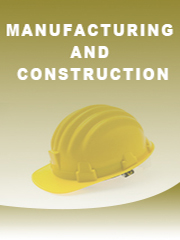Report overview
Laser soldering is a non-contact process that eliminates the risk of marring or damaging sensitive components. Robots are capable of producing micro-sized laser beams for otherwise difficult applications too small for iron tip soldering.
This report aims to provide a comprehensive presentation of the global market for Laser Soldering Robot, with both quantitative and qualitative analysis, to help readers develop business/growth strategies, assess the market competitive situation, analyze their position in the current marketplace, and make informed business decisions regarding Laser Soldering Robot. This report contains market size and forecasts of Laser Soldering Robot in global, including the following market information:
Global Laser Soldering Robot Market Revenue, 2018-2023, 2024-2029, ($ millions)
Global Laser Soldering Robot Market Sales, 2018-2023, 2024-2029, (Units)
Global top five Laser Soldering Robot companies in 2022 (%)
The global Laser Soldering Robot market was valued at US$ 87 million in 2022 and is projected to reach US$ 210.9 million by 2029, at a CAGR of 13.4% during the forecast period. The influence of COVID-19 and the Russia-Ukraine War were considered while estimating market sizes.
Global Laser Soldering Robot key players include Japan Unix, Quick, Apollo Seiko, etc. Global top three manufacturers hold a share about 30%.
Asia-Pacific is the largest market, with a share about 55%, followed by North America and Europe, both have a share about 40 percent.
In terms of product, 3-axis Robot is the largest segment, with a share about 70%. And in terms of application, the largest application is Consumer Electronics, followed by Automotive Electronics.
We surveyed the Laser Soldering Robot manufacturers, suppliers, distributors and industry experts on this industry, involving the sales, revenue, demand, price change, product type, recent development and plan, industry trends, drivers, challenges, obstacles, and potential risks.
Total Market by Segment:
Global Laser Soldering Robot Market, by Type, 2018-2023, 2024-2029 ($ Millions) & (Units)
Global Laser Soldering Robot Market Segment Percentages, by Type, 2022 (%)
3-axis Robot
4-axis Robot
Others
Global Laser Soldering Robot Market, by Application, 2018-2023, 2024-2029 ($ Millions) & (Units)
Global Laser Soldering Robot Market Segment Percentages, by Application, 2022 (%)
Consumer Electronics
Appliances Electronics
Automotive Electronics
Others
Global Laser Soldering Robot Market, By Region and Country, 2018-2023, 2024-2029 ($ Millions) & (Units)
Global Laser Soldering Robot Market Segment Percentages, By Region and Country, 2022 (%)
North America
US
Canada
Mexico
Europe
Germany
France
U.K.
Italy
Russia
Nordic Countries
Benelux
Rest of Europe
Asia
China
Japan
South Korea
Southeast Asia
India
Rest of Asia
South America
Brazil
Argentina
Rest of South America
Middle East & Africa
Turkey
Israel
Saudi Arabia
UAE
Rest of Middle East & Africa
Competitor Analysis
The report also provides analysis of leading market participants including:
Key companies Laser Soldering Robot revenues in global market, 2018-2023 (Estimated), ($ millions)
Key companies Laser Soldering Robot revenues share in global market, 2022 (%)
Key companies Laser Soldering Robot sales in global market, 2018-2023 (Estimated), (Units)
Key companies Laser Soldering Robot sales share in global market, 2022 (%)
Further, the report presents profiles of competitors in the market, key players include:
Japan Unix
Quick
Apollo Seiko
HORIUCHI ELECTRONICS
Unitechnologies
Wolf Produktionssysteme
Flex Robot
Seica
Huahan
ELMOTEC Antriebstechnik
Ruize Technology
Lotuxs
Outline of Major Chapters:
Chapter 1: Introduces the definition of Laser Soldering Robot, market overview.
Chapter 2: Global Laser Soldering Robot market size in revenue and volume.
Chapter 3: Detailed analysis of Laser Soldering Robot manufacturers competitive landscape, price, sales and revenue market share, latest development plan, merger, and acquisition information, etc.
Chapter 4: Provides the analysis of various market segments by type, covering the market size and development potential of each market segment, to help readers find the blue ocean market in different market segments.
Chapter 5: Provides the analysis of various market segments by application, covering the market size and development potential of each market segment, to help readers find the blue ocean market in different downstream markets.
Chapter 6: Sales of Laser Soldering Robot in regional level and country level. It provides a quantitative analysis of the market size and development potential of each region and its main countries and introduces the market development, future development prospects, market space of each country in the world.
Chapter 7: Provides profiles of key players, introducing the basic situation of the main companies in the market in detail, including product sales, revenue, price, gross margin, product introduction, recent development, etc.
Chapter 8: Global Laser Soldering Robot capacity by region & country.
Chapter 9: Introduces the market dynamics, latest developments of the market, the driving factors and restrictive factors of the market, the challenges and risks faced by manufacturers in the industry, and the analysis of relevant policies in the industry.
Chapter 10: Analysis of industrial chain, including the upstream and downstream of the industry.
Chapter 11: The main points and conclusions of the report.
